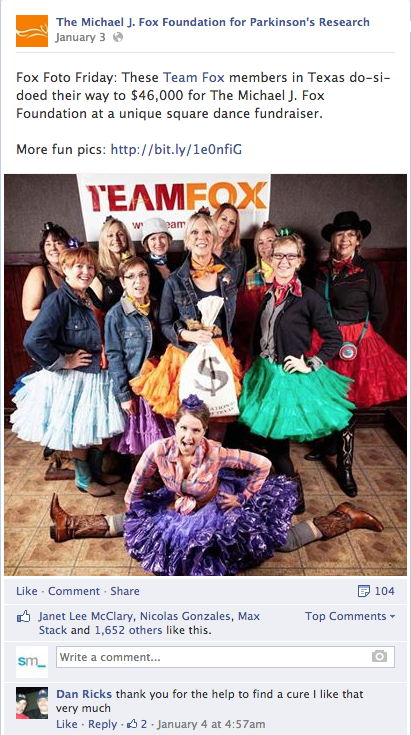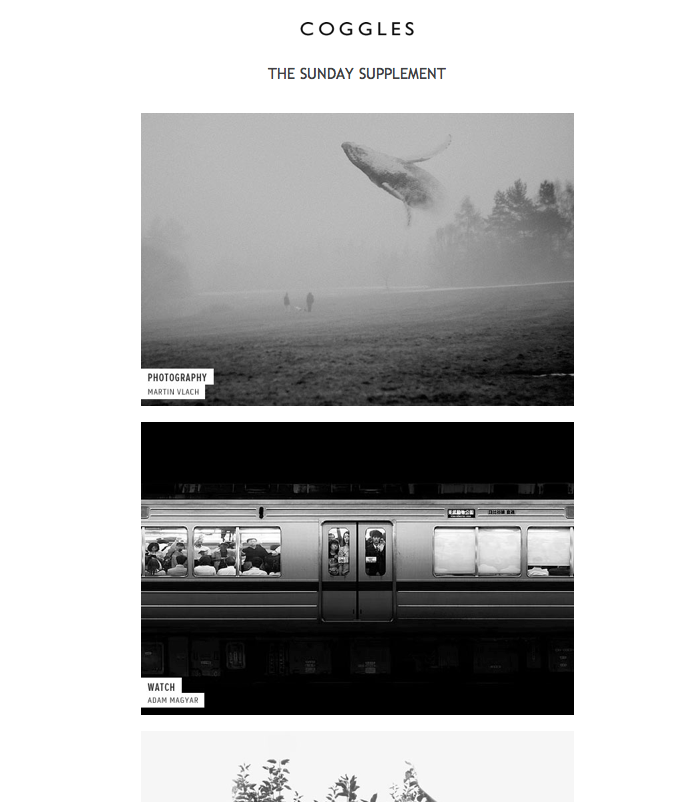It’s one of the hottest topics in content marketing. A quick Google search throws up thousands of results professing to help you do it, but why is building an audience so important?
Throughout March, we’re examining a few of the main topics related to this mysterious, but extremely important, part of content marketing.
After last week’s introductory spin through some key concepts, this week we’re looking at the way editorial regulars can give your content structure, build familiarity and expectation within your growing audience, and keep you disciplined.
The first step to ‘always on’
Editorial regulars can take several forms. They could be anything from a Facebook photo competition, as seen from the Michael J Fox Foundation (MJFF):
To weekly digest email like Coggles’ Sunday Supplement:
Clearly, these two pieces of content differ in subject matter, tone and the amount of time they take to produce. The content in the MJFF example is largely user-generated, with one or two messages put out on the charity’s social accounts each week to keep it in the forefront of followers’ minds. The eventual winning photo is repurposed across five of the organisation’s channels with the same accompanying message, shortened or lengthened to fit the specific channel. It’s simple, light-touch stuff.
Coggles on the other hand, probably puts more time into its Sunday Supplement – comprising as it does a richer collection of stories and brand-generated content. It’s also broadcast to the Coggles email database, which as a rule should mean it is more stringently edited.
On the face of things these two examples are quite distinct, but what the two have in common is their ‘regular’ status in the content mixes of their respective brands. Despite being far apart in terms of frequency and resource required, followers of both brands (if they value the content produced) will start to expect the same thing in the future, whether it is week-to-week or year-to-year.
By routinely delivering content that meets your audience’s expectations you can start to build all-important trust and recognition of your content – and take the first step to being an ‘always on’ publisher brand.
Keeping disciplined
Trying to plan your content can be one of the most overwhelming parts of content marketing – especially if you’re becoming a publisher for the first time. Editorial schedules can seem vast, never-ending and impossible to fill, but having one or two regular pieces to slot into your editorial schedule can give it some much needed structure. Dropping a few regular posts into the mix can make a week’s, or month’s, or even year’s worth of content production seem like a much less daunting task.
It’s also much harder to justify missing an established regular piece of content. Your fans and followers will miss their usual fix of informative or entertaining content from your brand much more than that one-off piece you’ve been thinking about for a while, but haven’t gotten round to writing. This should keep you on track with your content production and help you prioritise it as a ‘must-do’ task rather than an ‘if I’ve got time’ indulgence.
Thinking about the big picture (or big infographic)
When you’ve got your editorial cornerstones in place that can make it much easier to think big with your other content. Instead of worrying about what you’ll publish this week or next, you can give more thought to other bits and pieces. Maybe it’s time to experiment with a new channel or reassess your blogging strategy, while regular Facebook content keeps things ticking over.
At Speak, our own editorial calendar is usually pretty packed, with much of the content we create belonging to regular strands like ‘Content brand of the week’ or ‘Show and tell’. This gives us a clear idea of what we should be creating, but also allows us to go off-topic sometimes too, confident that our core audience is still getting what they want and expect from us.
This awesome infographic, put together by designer Jo and made with hundreds of grimy old bike parts is a perfect example of an outside-the-box content project.
If you’re lucky enough to have more than one team member available to work on content production you can even divide up responsibility so that one of you is responsible for making sure your regulars go out, while the other is freed up for more big-picture or experimental content.
Editorial engagement: three things to remember
1. From little regulars grow mighty content brands: establishing a recurring piece of content in your weekly or monthly content schedule might not seem like much, but can be the first step to building a globally recognised, ‘always on’ content brand.
2. Regulars will keep you honest and disciplined: it’s all too easy to let content slide when you haven’t publically committed to publishing it. Putting out a regular post, picture or video will take away that excuse, and force you to publish!
3. Let the content set you free: once they’re up and running, editorial regulars can be liberating, allowing you to expand on your offer, without letting down your growing audience.
Keep watching the blog for more on building an audience, in the meantime check out some of our other great content:
Stop shouting into the void: the basics of building an audience
More from Tom Owen
More insights
Contact us for help building your own following




One thought